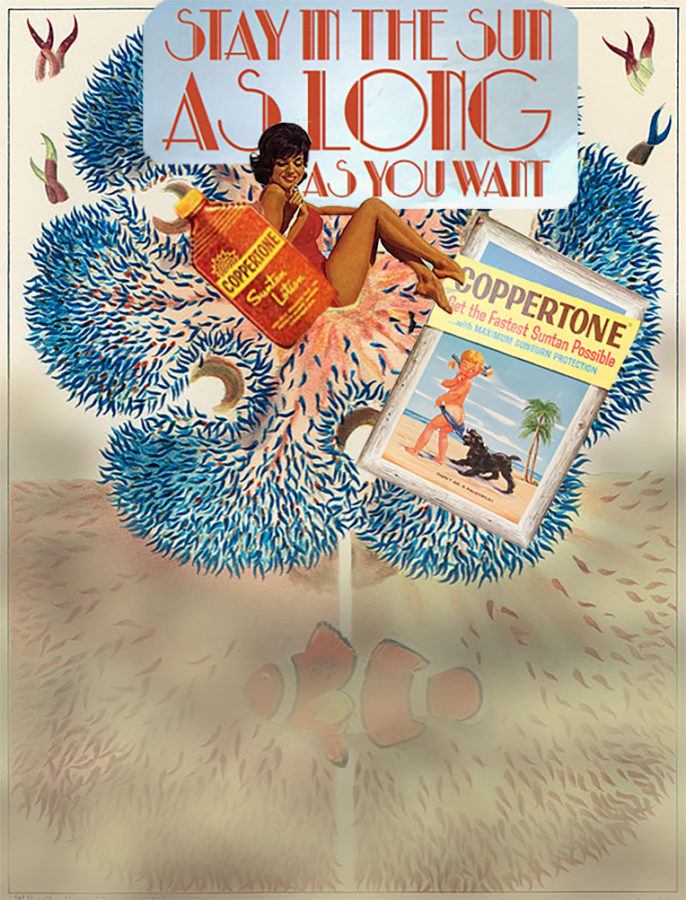Healthy vs Harmful Sunscreens
The chemical makeup of sunscreen is often a second thought when using it in our day-to-day lives during the Summer time. However, a chemical called Oxybenzone in sunscreen is steadily dissolving our coral reefs before our very eyes and Hawaii has taken a step forward addressing this issue.
Over the summer, Paly students branch out across the world on vacation in various exciting locations. However, a hot spot for lots of families is somewhere not too far from home but still a well-known tourist location: Hawaii. Lounging on the beach, snorkeling and swimming are musts when it comes to enjoying the hot summer sun on one of these alluring islands. When lounging on the beach, the one thing you need to keep your skin safe when it is exposed to this type of UV radiation is sunscreen. Sunscreen, as we know, comes in different forms such as spray sunscreen and the standard cream form, but there is much more to it than just its appearance. Until recently, almost all sunscreen contained a chemical called Oxybenzone ( C14H12O3 ), an organic chemical that is used to absorb UV radiation. Studies have shown that this chemical has a negative effect on coral reefs when it comes off the skin into the ocean. In order to break down how we can individually start to fix this issue over the summer, we must delve deep into how this chemical is so detrimental to both us and the ocean.
Eager to swim, most kids and teenagers do not hesitate to jump into the ocean right after applying sunscreen, however, sunscreen that is not completely dry can easily slip off the skin and infect the ocean and surrounding environment. Before oxybenzone can even reach the coral that lies several feet below the surface, other organisms are also directly affected by sunscreen contamination. According to The Ocean Foundation, Oxybenzone has a negative impact on almost everything in the ocean: fish, sea urchines, algae and mammals. When Oxybenzone comes in contact with reefs, it can bleach the coral and disrupt the symbiotic relationship it has with algae and can weaken the defense coral has against viral infections as well. This raises the question, why do sunscreen companies use it at all? The short answer is that Oxybenzone is the most effective chemical in absorbing UV radiation before it reaches the skin and is more convenient than physical sunscreens that block the sun instead of absorbing it. A survey collected by the EWG (Environmental working group) showed that, on average, Oxybenzone can be found in 80 percent of commercial sunscreens, a lot of which are sold near tourist populated areas. Hawaii, for example, is filled with hotels and resorts that sell sunscreen to visitors looking for extra protection for their kids during their day at the beach. Although, most of these parents don’t think twice about what toxic chemicals the sunscreen contains or whether or not it will harm the ocean.
However, recently there has been more news coverage about how harmful sunscreen can be to both children and the environment. Because of this, companies like Goddess Garden and Neutrogena have substituted Oxybenzone for Zinc Oxide to ensure nothing is getting harmed in exchange for the protection of our skin. CNN also reported in Summer of 2018 that Hawaii signed a bill banning sunscreen containing toxic chemicals because of its harmful potential to their reefs. If more areas can do this, the US can hopefully ban the sale of sunscreens with Oxybenzone, encouraging the movement towards a healthy and safe ocean for coral reefs.







![UNSUNG HEROES — Fred Korematsu, Karen Korematsu and Aiko Herzig-Yoshinaga are awarded the Asian American Justice Medal to recognize their fight for justice following the incarceration of Japanese Americans during World War II. In addition, scientists Shuji Nakamura, David Ho, Tsoo Wang, Mani Menon and Chih-Tang “Tom” Sah receive the Asian American Pioneer Award. "[As a scientist,] it is crucially important to be able to communicate your work and your discoveries to [not only] other scientists, but also to the general public," Ho said. Photo by Talia Boneh](https://cmagazine.org/wp-content/uploads/2025/07/useee-600x400.jpg)
